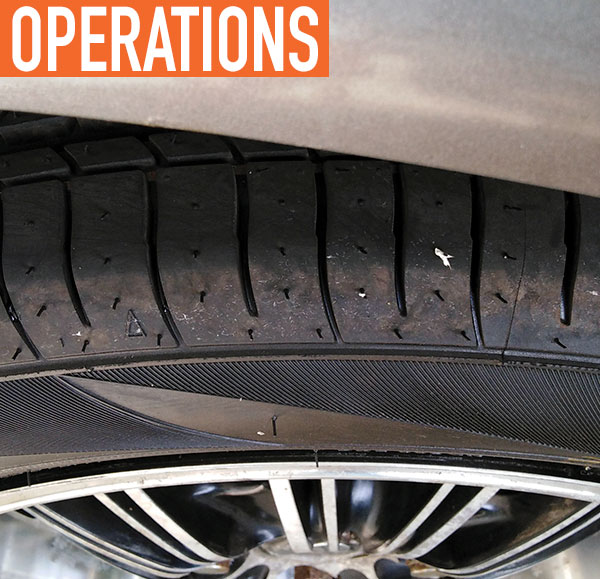As a fleet owner, you know the cost of replacing tires is a major expense. But what if you could save on tire costs while still optimizing performance and safety? Retreading can help you do just that—consolidate costs and reduce the burden on your bottom line by extending the life of your tires.
While the process of retreading met with skepticism in the past, many fleets today, both large and small, opt for retreads due to their range of benefits. Retreads are a sustainable, cost-effective way to manage your tire assets, so if you’re looking to cut down your cost per mile, retreading is something you may just want to consider for your fleet.
SAVINGS AND SAFETY
Retreading saves the trucking industry over $3 billion each year, and it’s an effective way to lower your tire costs, too. The most expensive part of a tire is its casing, which is why it’s important to preserve your tire casings if you intend to retread. Rather than replacing the whole tire once the usable tread deteriorates, you can retread a viable casing up to two, three, and maybe even four times during its lifecycle.
Retreaded tires cost less to produce than new tires and sell for less than the price of a similar new tire. So whether you’re purchasing retreads or retreading your own casings, many fleets choose retreads for one simple reason—to save money.
Thanks to advances in retreading technology, fleets can find premium retreads that are comparable to new tires without sacrificing safety and performance. In fact, studies show that 68% of tire debris collected on the highway actually comes from new tires, not retreads.
Tire manufacturers are more dedicated to the research and development of retreads than ever before. Goodyear, for example, offers UniCircle retreads, which have a spliceless tread positioned onto casings using laser-guided technology. This allows the retreads enhanced traction and resistance to tearing and chunking, at a fraction of the cost of brand new tires.
Goodyear also offers GTRACS monitoring, an automated system that provides valuable data about your retreads. Through this research and development, premium retreaders like Goodyear combine today’s compounding technology with different tread designs in order to deliver tires that offer like-new performance.
THE RIGHT RETREADS
Whether you’re purchasing them or reusing your own casings, selecting the right retreads for your fleet’s application are paramount to getting the best return on your investment as different trucks and applications require different treads.
When selecting the right tires for your fleet, you should consider their position on the vehicle, for what application they’ll be used, as well as traction, tread wear, and durability.
If your fleet is in a construction application, you might select a drive retread made with a cut-resistant compound. A fleet looking for retreads in a long-haul application, however, may opt for a fuel-efficient tread compound to ensure low rolling resistance.
Whether you’re looking to increase fuel efficiency or avoid frequent damage in an off-road environment, it’s important to consult a trusted tire partner who can develop a program tailored to your specific business needs. Luckily, there are many retread options available today to fit the needs of any fleet.
CARE AND MAINTENANCE
At least 70% of the cost of a tire is in the casing, so no matter the environment your vehicles operate, the key to success is taking care of your casings. More focus on tire maintenance in general can help improve your fleet’s fuel economy and reduce your chances of a costly tire-related breakdown later on, adding to the overall profitability of your fleet.
Routine tire maintenance is fundamental to the longevity of your tires, especially if you plan on preserving your casings for future reuse. The most important tire maintenance practices include making sure the air pressure in tires matches the load and checking pressure levels daily to ensure they’re properly inflated. Proper tire inflation helps increase fuel efficiency, ensures the tires can carry the given load and perform as expected, and reduces the chances of irregular wear over time.
In addition, fleets should conduct visual inspections to identify any irregular wear, bulges, cuts, or other visible damage. It’s also important to monitor tread depth to ensure the tires are pulled from service for retreading and to confirm they meet the DOT standard.
An effective tire management program—including choosing the right tires for your application and regular maintenance and inspections—helps ensure that you’re getting the most out of your tire investment. And it all starts with finding a tire provider that you trust.
ABOUT THE AUTHOR
Bob Eck is VP of TA Truck Service Commercial Tire Network. TravelCenters of America has more than 245 locations nationwide and nearly 3,000 technicians with ASE and TIA certifications. Find out more, visit www.ta-petro.com.
MODERN WORKTRUCK SOLUTIONS:
OCTOBER 2019 ISSUE
Did you enjoy this article?
Subscribe to the FREE Digital Edition of Modern WorkTruck Solutions magazine.





